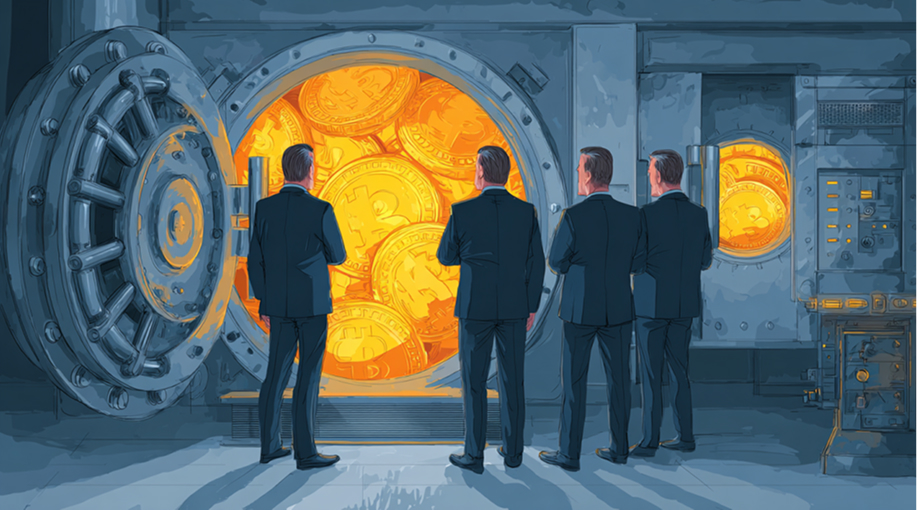Terra update: LUNA Live price, price chart, news and markets






Terra Price Chart Update [LUNA]
Terra Price Update Today
About Terra
An Overview of Terra Luna
The Terra protocol is an open-source blockchain protocol that focuses on algorithmic stablecoins. Its main goal is to create stablecoins that consistently mirror the price of any fiat currency through a combination of open market arbitrage incentives and decentralized Oracle voting. On the Terra blockchain, users can instantly spend, save, trade, or exchange Terra stablecoins. Furthermore, Luna, the native staking token of the Terra protocol, has its own perks, such as staking rewards and governance power. As the Terra ecosystem expands, more decentralized applications are being developed, creating a stable demand for Terra and increasing the value of Luna.
Terra and Luna: The Main Tokens
The Terra protocol consists of two primary tokens: Terra and Luna.
Terra: These stablecoins are designed to closely follow the price of fiat currencies. Users can mint new Terra by burning Luna. The stablecoins are named after the fiat counterparts, such as TerraSDR (or SDT) for the IMF's SDR, TerraUSD (or UST), and TerraKRW (or KRT) for the Korean won. All Terra denominations exist in the same pool.
Luna: Luna serves as the native staking token within the Terra protocol. It absorbs the price volatility of Terra and is utilized for governance and mining purposes. Users stake Luna to validators who record and verify transactions on the blockchain, and in return, they receive rewards from transaction fees. The value of Luna increases as Terra is used more frequently.
Exploring the Functionality of the Terra Protocol
Stablecoins within the Terra Protocol
Stablecoins play a central role in the Terra protocol. These cryptocurrencies are designed to mirror the price movements of an underlying currency. Terra stablecoins offer the same functionalities as fiat currency but with the added advantages of blockchain technology, such as an immutable public ledger, instantaneous transactions, faster settlement times, and lower fees.
The value of stablecoins lies in their ability to maintain their price peg. The Terra protocol achieves this by relying on the forces of supply and demand. When demand for Terra is high and the supply is limited, the price of Terra rises. Conversely, when demand for Terra is low and the supply is abundant, the price of Terra decreases. The protocol ensures a balanced supply and demand for Terra, resulting in a stable price.
Expansion and Contraction Mechanisms in Terra
The Terra economy can be visualized as two pools: one for Terra and one for Luna. To maintain the price stability of Terra, the Luna supply pool adjusts the supply of Terra. Users have the ability to burn Luna to mint Terra and burn Terra to mint Luna. These actions are incentivized by the protocol's algorithmic market module.
Expansion: When the price of Terra exceeds its peg, indicating high demand and limited supply, the protocol encourages users to burn Luna and mint more Terra. This increases the supply of Terra, balancing it with the demand. Users continue to mint Terra by burning Luna until the price reaches its target. This process reduces the size of the Luna pool and increases the price of Luna.
Contraction: When the price of Terra falls below its peg, signaling excessive supply and low demand, the protocol incentivizes users to burn Terra and mint Luna. This reduces the supply of Terra, creating scarcity and driving up its price. More Luna is minted from burned Terra until the price reaches its target. This process increases the size of the Luna pool and lowers the price of Luna.
Luna serves as a variable counterpart to the stable asset Terra. As the demand for stablecoins increases, the price of Luna also rises.
The Market Module and Arbitrage Opportunities
The price stability of Terra relies on the protocol's algorithmic market module, which incentivizes the minting or burning of Terra through arbitrage opportunities. Arbitrage occurs when users profit from price differences between various markets.
The market module of the Terra protocol enables users to always trade 1 USD worth of Luna for 1 UST, and vice versa. This incentivizes users to maintain the price of Terra. The same principle applies to all Terra stablecoin denominations.
Users can access the mint and burn function of the market module by executing market swaps in Terra Station. For more information on how to utilize the market swap feature of Terra Station, refer to the Terra Station market swap guide.
The Scalability of the Terra Protocol
The Terra protocol is specifically designed to maintain the price stability of Terra regardless of market size, volatility, or demand. The monetary policies embedded in the protocol ensure its resilience and durability in the face of market fluctuations.
Seigniorage and Deflation within Terra
Seigniorage refers to the value of a coin minus the cost of its production. In previous versions of the Terra protocol, seigniorage was used to fund various community projects. However, seigniorage also resulted in inflation within the system. In the Terra protocol, all seigniorage is burned, making Luna inherently deflationary.

| # | Exchange | Pair | Price | Volume | Mkt Share | Recommend | |
|---|---|---|---|---|---|---|---|
| 1 |

|
HTX Global | LUNA/USDT | $0.1575 | $2,905,169 | 27.61% |

|
| 2 |

|
Binance | LUNA/USDT | $0.1611 | $1,183,015 | 11.24% |

|
| 3 |

|
MEXC Global | LUNA/USDT | $0.1611 | $763,886 | 7.26% |

|
| 4 |

|
KuCoin | LUNA/USDT | $0.1612 | $570,642 | 5.42% |

|
| 5 |

|
BTCTurk | LUNA/TRY | $0.1616 | $519,495 | 4.94% |

|
| 6 |

|
OKX | LUNA/USDT | $0.1611 | $406,585 | 3.86% |

|
| 7 |

|
Binance | LUNA/TRY | $0.1618 | $387,435 | 3.68% |

|
| 8 |

|
LBank | LUNA/USDT | $0.1612 | $250,476 | 2.38% |

|
| 9 |

|
CoinW | LUNA/USDT | $0.1611 | $242,253 | 2.3% |

|
| 10 |

|
XT.COM | LUNA/USDT | $0.1612 | $236,406 | 2.25% |

|
| 11 |

|
Bitget | LUNA/USDT | $0.1611 | $177,877 | 1.69% |

|
| 12 |

|
Crypto.com | LUNA/USD | $0.1616 | $125,267 | 1.19% |

|
| 13 |

|
WhiteBIT | LUNA/USDT | $0.1610 | $125,064 | 1.19% |

|
| 14 |

|
BTCTurk | LUNA/USDT | $0.1613 | $106,781 | 1.01% |

|
| 15 |

|
Gate.io | LUNA/USDT | $0.1612 | $103,913 | 0.99% |

|
| 16 |

|
BitMart | LUNA/USDT | $0.1613 | $86,555 | 0.82% |

|
| 17 |

|
BYDFi | LUNA/USDT | $0.1612 | $84,633 | 0.8% |

|
| 18 |

|
Bybit | LUNA/USDT | $0.1611 | $69,457 | 0.66% |

|
| 19 |

|
Bitvavo | LUNA/EUR | $0.1618 | $56,604 | 0.54% |

|
| 20 |

|
BigONE | LUNA/USDT | $0.1617 | $54,402 | 0.52% |

|
| 21 |

|
BingX | LUNA/USDT | $0.1612 | $50,840 | 0.48% |

|
| 22 |

|
DigiFinex | LUNA/USDT | $0.1613 | $47,226 | 0.45% |

|
| 23 |

|
Kraken | LUNA/USD | $0.1620 | $34,772 | 0.33% |

|
| 24 |

|
CoinEx | LUNA/USDT | $0.1611 | $15,349 | 0.15% |

|
| 25 |

|
Kraken | LUNA/EUR | $0.1634 | $13,549 | 0.13% |

|
| 26 |

|
LATOKEN | LUNA/USDT | $0.1610 | $8,994 | 0.09% |

|
| 27 |

|
CoinEx | LUNA/BTC | $0.1612 | $2,835 | 0.03% |

|
| 28 |

|
KuCoin | LUNA/USDC | $0.1611 | $2,332 | 0.02% |

|
| 29 |

|
Osmosis | LUNA/OSMO | $0.1594 | $1,843 | 0.02% |

|
| 30 |

|
CoinDCX | LUNA/INR | $0.1688 | $412 | 0% |

|
| 31 |

|
OKX | LUNA/USDC | $0.1595 | $115 | 0% |

|
| 32 |

|
Osmosis | LUNA/OSMO | $0.1589 | $74 | 0% |

|
| 33 |

|
Crypto.com | LUNA/USDT | $0.1619 | $19 | 0% |

|
| 34 |

|
OKX | LUNA/USD | $0.1593 | $15 | 0% |

|
| 35 |

|
Osmosis | USDC/LUNA | $0.1602 | $8 | 0% |

|
| 36 |

|
Osmosis | USDC/LUNA | $0.1602 | $1 | 0% |

|
| 37 |

|
BTSE | LUNA/USD | $0.1615 | $1,331,112 | 12.65% | |
| 38 |

|
Bitrue | LUNA/USDC | $0.1613 | $326,405 | 3.1% | |
| 39 |

|
Bitrue | LUNA/USDT | $0.1612 | $78,583 | 0.75% | |
| 40 |

|
Deepcoin | LUNA/USDT | $0.1612 | $43,582 | 0.41% | |
| 41 |

|
tokenize | LUNA/USD | $0.1595 | $38,903 | 0.37% | |
| 42 |

|
Phemex | LUNA/USDT | $0.1609 | $37,128 | 0.35% | |
| 43 |

|
BTSE | LUNA/USDT | $0.1613 | $25,769 | 0.24% | |
| 44 |

|
BTSE | LUNA/USDC | $0.1615 | $2,020 | 0.02% | |
| 45 |

|
Zonda | LUNA/PLN | $0.1605 | $1,243 | 0.01% | |
| 46 |

|
Indodax | LUNA/IDR | $0.1719 | $1,138 | 0.01% | |
| 47 |

|
Mudrex | LUNA/USDT | $0.1611 | $642 | 0.01% | |
| 48 |

|
Bibox | LUNA/USDT | $0.1552 | $17 | 0% |


 News
News Market
Market Knowledge
Knowledge Reviews
Reviews Recommended
Recommended Upcoming Event
Upcoming Event Coin
Coin
 Glossary
Glossary Convert
Convert



























